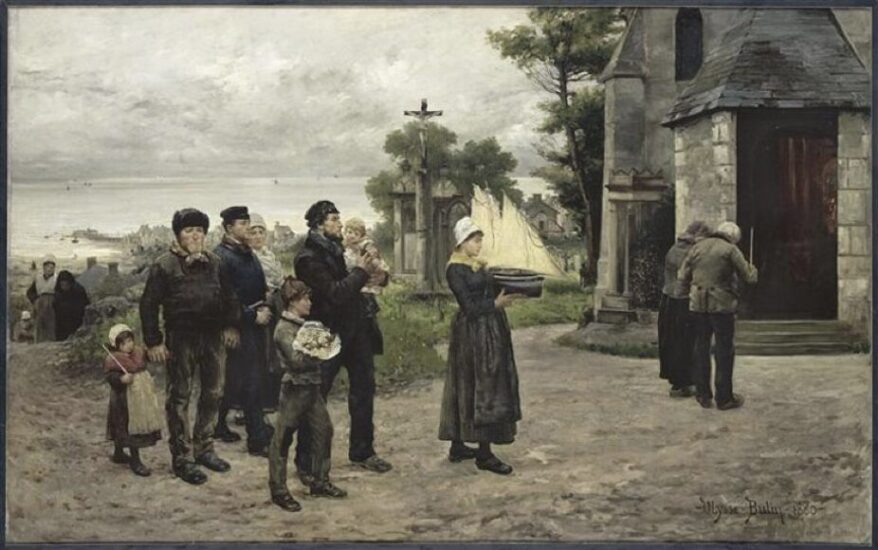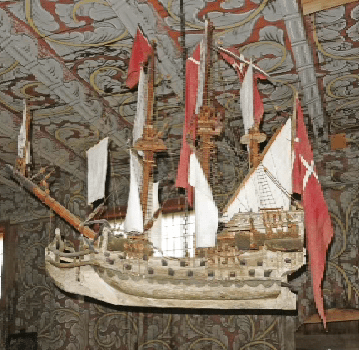A Votive Ship for Lake of the Isles
A Votive Ship for Lake of the Isles
May 2025

Some went down to the sea in ships, doing business on the mighty waters. Psalm 107:23
A votive ship is a ship model displayed in a church either hanging from the ceiling, resting in a window or on occasion painted, especially in France, painted on a canvas. The practice stems from the Middle Ages and appears to have been known throughout Christian Europe. The oldest known remaining votive ship is a Spanish ship model in the 15th century. A model ship originally displayed in Stockholm Cathedral dating from 1590 is the oldest surviving example in Scandinavia. The name votive itself comes from the Latin phrase Ex-Voto which means “made after a vow.” These model ships, as a rule, were constructed and given as gifts to the church by sailors and ship builders after the completion of a tour of service or survival at sea

Growing up in southern Minnesota, as far away from any great sea or ocean as one could imagine, I was fascinated by wooden sailing ships. I assembled many plastic models, but I never attempted to do it in wood. Nearing closer to retirement, I have begun to contemplate a departing gift for my ministry at Lake of the Isles. After visiting the stave church of my ancestors in Kvernes, Norway, and seeing the votive ship hanging there, I decided to build my own wooden ship for Lake of the Isles. The question was simply which ship would it be, and how long would it take to complete? Finally, I decided on the Norwegian ship, the Restauration which sailed from Norway to New York in 1825. I was hoping to complete it before I completed ministry at Lake of the Isles.

The Restauration was the right personal, family choice. On July 4th, 1825 the Restauration, the single masted-slooper, began its journey from Stavanger, Norway to New York City with a small band of emigrants aboard seeking religious freedom. The passengers, under the leadership of Cleng Peerson, were Quakers and Haugeans who were not tolerated by the State Church of Norway. For this reason the Restauration was known as the Norwegian Mayflower. The majority of my Norwegian ancestors were solidly Lutheran, but my mother’s father’s side of the family were English Quakers. They arrived aboard William Penn’s second ship, the Bristol Factor in 1680 to establish the colony of Pennsylvania. The Restauration tied these family histories together.
Of course, the spoiler alert to this story is that I am not retiring in 2025, but my model wooden ship is finished and waiting to be displayed. Across the US, Norwegian-Americans are already celebrating the 200th anniversary of the Restauration’s travels and the beginning of Norwegian emigration to the US. So what am I to do? Wait around for a few more years, or just present it to the church now? Well, I’ve decided it will be a grand day to celebrate the arrival of the votive ship to Lake of the Isles on Sunday, May 11th.
It will be a day of music and Norwegian food. The Norwegian Glee Club will sing for the worship service, presenting naval themed choral music, and the church choir will perform Norwegian themed hymns with the contemporary twist of a soprano saxophone. Everyone is invited to bring their own favorite Scandinavian dessert or appetizer for the coffee fellowship hour.
Peace, Pastor Arden Haug
